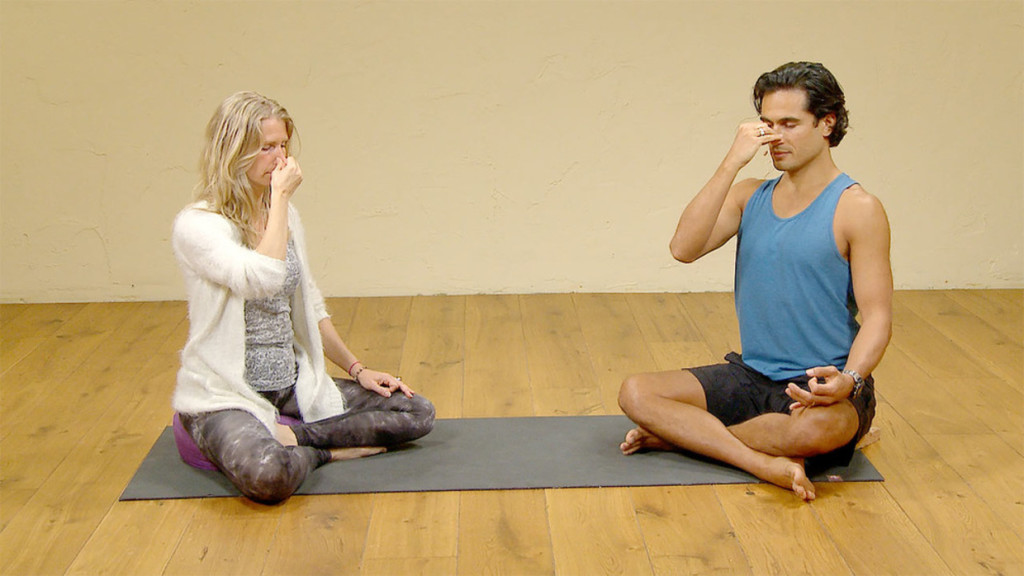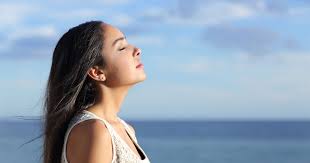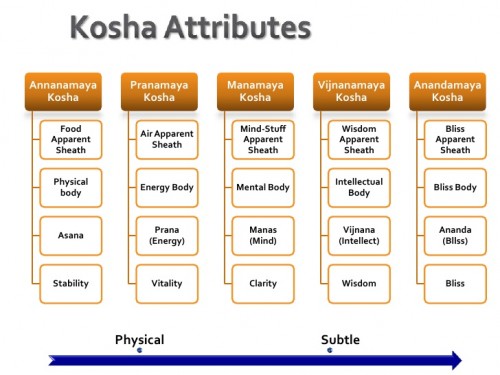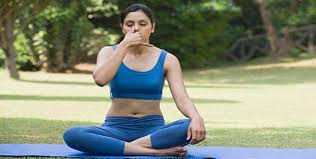Before getting to know what is Pranayama? Let’s understand what is Prana?, Prana means a vital energy or life force present in all beings, although closely related to the air we breathe, it is more subtle than air or oxygen. Whatever moves or has life is but an expression or manifestation of Prana. Our five senses are closely related to Prana. Prana is consumed by all our day to day actions like thinking, willing, acting, moving, talking and writing.
What is Pranayama?

Compared to olden days, stress and stress related diseases are at its peak in the current era. Though we know that stress is the root cause, most of us actually don’t know how to tackle it and make our body and mind resistant to its negative impact. This is where pranayama or breathing techniques comes to our rescue. If observed carefully we can figure out that our breathing pattern varies with our emotion. We breathe faster when we are angry and our breadth is deep and relaxed when we are happy. So by controlling our breath we can make our mind disciplined. And this is what Pranayama is all about, i.e. controlling your body and mind through various breathing techniques.
Pranayama is generally defined as breath control. Breath is outward manifestation of the gross Prana. On subtle levels Prana represents the Pranic energy responsible for life force present in all things. Ayama is defined as extension or expansion. Thus the word Pranayama means extension or expansion of the dimension of Prana. So Pranayama is a method by which the life force can be activated or regulated. Hope this explains what is Pranayama, the art of breathing.
The Pranic Body
According to the yogic physiology, the human framework is comprised of five bodies or sheaths, which account for different aspects of human existence. These five sheaths are mentioned below
- Annamaya kosha, the food or material body
- Manomaya kosha, the mental body
- Pranamaya kosha, the bioplasmic or vital energy body
- Vignanamaya kosha, the psychic or higher mental body
- Anandamaya kosha, the transcendental or bliss body
Although these five bodies function together to form an integral whole, the practice of Pranayama works mainly with Pranamaya kosha. The Pranamaya kosha in turn is made up of five types of Prana’s called ‘Pancha Prana’ that are responsible for various Pranic activities in the body, they are Prana, Apana, Samana, Udana and Vyana. Out of these Prana and Apana are most important. Prana is upward flowing energy and Apana is downward flowing energy.
- Prana: Prana in this context is upward flowing energy associated with the heart and organs of respiration together with the muscles and nerves that activates them. It is the force by which the breath is drawn inside.
- Apana: Governs the abdomen and provides energy for large intestine, kidneys, anus and genitals. It is concerned with the expulsion of waste from the body and is the force which expels the breath.
Practice of Pranayama will help achieve the balance in the activities of these Prana and Apana, which results in healthy body and mind.
Breath, Health and Pranayama
Now that we have understood what is pranayama and the energy bodies and different types of Pranic bodies involved during pranayama, let get little deeper to know what happens during pranayama and how the art of breathing and control of breath is achieved that impact’s on our mental & physical health.
In the Pranayama practices, there are four important aspects of breathing which are utilized, these are,
- Puraka or the inhalation
- Rechaka or the exhalation
- Antar Kumbhaka or internal breath retention
- Bahir Kumbhaka or external breath retention
These are practiced consciously in the various pranayama techniques. A person breathes in and out from the time of birth till death. The breath is the most vital process of the body. It influences the activities of each and every cell in the body and most importantly it is intimately linked with the performance of the brain. Breathing provides the vital energy required for nourishment of the body and mind. Sometimes the breath is light and sometimes it is deep. Sometimes the breath stops for an instant or so. This happens naturally, even during our sleep. It is an unconscious activity, controlled by the nervous system.
During our usual breathing we are using only half of the lungs for breathing, this we can easily know by taking a deep breath. The breathing is then generally shallow, depriving the body of oxygen and prana which leads to physical, emotional and mental blocks. These in turn leading to inner conflict, unbalanced personality, a disordered lifestyle and disease.
But with the practice of Pranayama Techniques, we establish a regular breathing patterns. This helps controlling the breath that influence the flow of Prana in the nadis, purifying, regulating and activating them. With this deep breathing as we utilize the lungs more and more the pure oxygen entering to blood also increases and each blood cell increases their efficiency, and hence the whole body gets benefited. Thereby inducing mental and physical stability. Prana and the mind have a close relationship as the mind needs Prana energy to function. When the Prana is controlled, the mind becomes controlled naturally, if the mind and Prana are both controlled, the sense organs will automatically get controlled. This is possible only by regular practice of Pranayama. This also simulates a calm and content state of mind and re-establishes the natural, relaxed rhythms of the body and the mind.
Basically through the practice of Pranayama, the energy trapped in neurotic, unconscious mental patterns will be released for use in more creative and joyful activity. The one who practises Pranayama regularly will have good hunger, joyfulness, good-looking figure, good strength, courage, and enthusiasm, a high standard of health, vigour and vitality and good awareness of mind. This is the goal of pranayama where the breathing can be regulated and controlled for various health and spiritual benefits.
We have now understood what is Pranayama, how the art of Pranayama helps in controlling the breath and its impact on the mental & physical health. Now to get started with the practice understand the general rules to do Pranayama and different Pranayama Techniques.
Note: It is highly recommended to learn Pranayama from a qualified Yoga teacher and adapt the required Pranayama Techniques.
- The Namagiri Thayar Mantra – For Wisdom, Creativity & Prosperity - April 29, 2024
- Krishnashtakam – “Krishnam Vande Jagadgurum” – Lyrics & Meaning - April 4, 2024
- Karadarshanam – “Karagre Vasate Lakshmi” – Meaning & Benefits - March 26, 2024






0 Comments